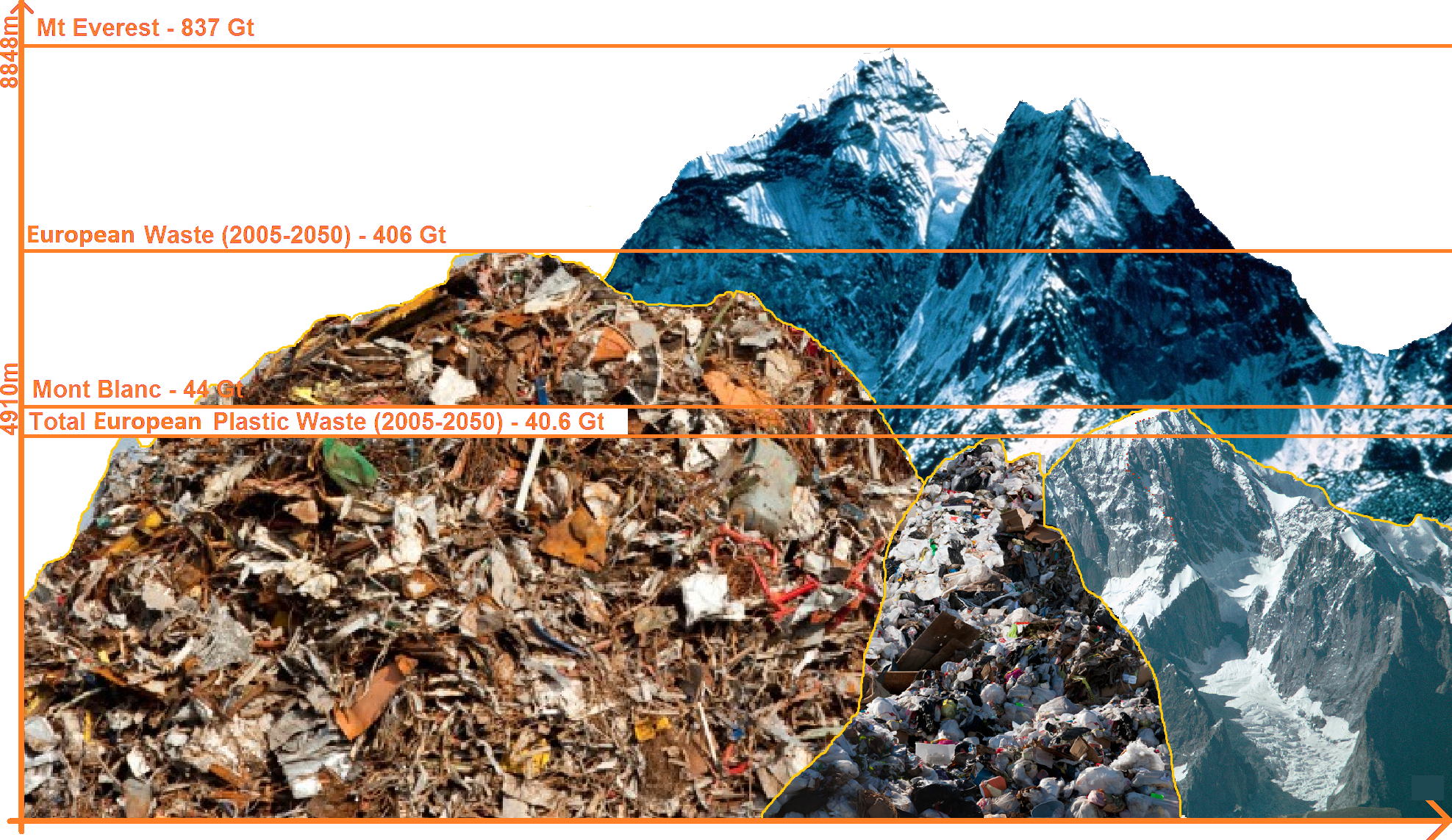Team:Imperial College/The Waste Issue
From 2013.igem.org
The Waste Issue
Due to the necessities of living we are always going to produce waste. Couple this with a human population of over 7 billion and increasing consumerism around the world and this waste really starts to add up. Here we explain the extent of the issue and how our system helps to tackle it.
A World of Waste
Each year over four billion tonnes of solid waste - hazardous, industrial and municipal is produced within Europe. We have estimated that between 2005 to 2050, enough waste will be produced to create a mountain half the size of Everest. Plastic waste alone, at ten percent of the total will produce a mountain the size of Mont Blanc, the largest mountain in the EU. Plastic waste is a particular problem due to its seemingly infinite lifetime in the environment and issues with recycling it when it is mixed with other materials. The best known results of plastic accumulation are its harmful effects on marine life. However it can also break down into small pieces and toxic byproducts as well. The mismanagement of waste is not only leading to severe environmental problems but social ones also. The shipping of waste around the world is a disturbing problem but one that makes economic sense. This needs to change.
Solid Recovered Fuel is our target
If plastics are kept chemically pure and physically separated then they can often be recycled and reused. When they are mixed however with food waste and other items then there are only two end of life solutions, landfill or incineration. Solid recovered fuel(SRF) is one of these mixed wastes. It results from the processes recovering valuable materials from waste in mixed recycling facilities. It consists of all the small fragments of plastic, wood, paper and fibre which are too small to be separated further by the recovery machines. Twenty percent of what enters a recovery facility leaves as SRF. Just one of these recovery facilities in north-west London produces 320,000 tonnes of SRF a year. This is a waste product, costing the facilities millions in disposal and ending up at incinerators where toxic chemicals are released into the atmosphere along with large amounts of CO2. Incineration is a one-time-only affair; the resources which went into the production of these materials are lost to the atmosphere.
Our Solution
Our system is designed to recover the valuable resources locked up in the SRF, transforming it from a waste material into the commodities ethylene glycol and poly-3-hydroxybutyrate; a feedstock for many applications and a useful bioplastic respectively.
References
- This is some reference
- This is something else
- This is something else
- This is something else
- This is something else
- This is something else
- This is something else
 "
"





